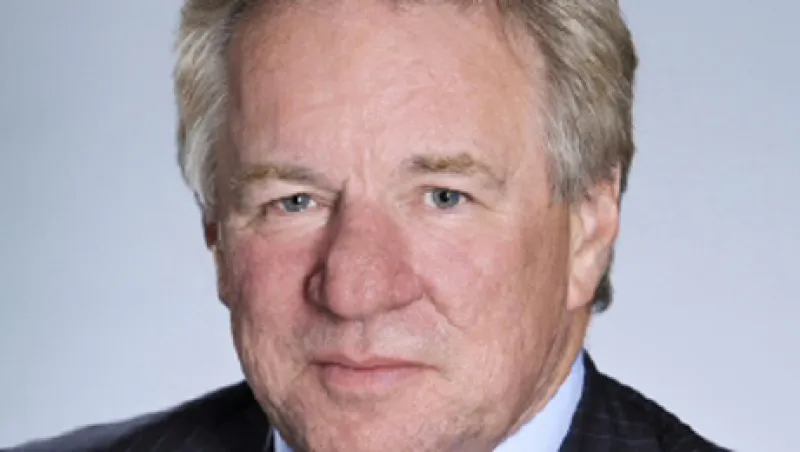When Scottish poet Robert Burns wrote, “Now is the day, now is the hour,” he wasn’t referring to Aberdeen Asset Management, but he could have been. In late November the Aberdeen-based investment management firm announced its acquisition of the Scottish Widows Investment Partnership (SWIP), an asset management arm of Lloyds Banking Group. The deal made Aberdeen Europe’s largest independent fund manager, with more than $550 billion in assets under management.
The all-stock deal is worth £550 million ($900 million), giving Lloyds an approximate 9.9 percent stake in Aberdeen. The deal also includes performance earn-out payments that could total £100 million over the next five years.
Aberdeen chief executive officer Martin Gilbert has seen his company through good times and bad. Gilbert is a founder-shareholder of the investment management group that opened shop in 1983. He was at the helm in 2002 when Aberdeen was embroiled in the split capital investment trust scandal, which saw private investors lose more than $1 billion from investment vehicles they were told were mostly risk free.
Gilbert survived the storm, and in 2012 Aberdeen joined the FTSE 100.
Institutional Investor Associate Editor Ben Baris sat down with Gilbert at Aberdeen’s New York office to discuss the Scottish Widows acquisition and the outlook for the investment management firm.
Institutional Investor: Why did Aberdeen choose to pursue Scottish Widows for an acquisition?
Gilbert: We had a board strategy session when we were in Singapore. We sat down and said, “Look, we’d really like to build the bond business, the real estate business and the solutions business.” The board wanted to do small in-fill acquisitions in these three areas, and it became more and more obvious that we should have a look at SWIP, which filled all of these strategic objectives in one go. And the other thing it didn’t have was a big global equity business, so it fit in neatly with what we were trying to achieve. Coupled with that came the distribution relationship with Lloyds. Lloyds has a 30 percent market share in the U.K. and 2 percent of the wealth market. It’ll be a good strategic relationship.
How does this acquisition affect your U.S. strategy?
The U.S. is such an attractive market, in that half of the world’s wealth is here. Despite everyone in the rest of the world saying China is the next superpower, the wealth accumulated here is so vast that this is the market for fund managers, and it’s no different for us. Size-wise we’re in the top ten in the world in independents. This gives us the financial strength to continue to develop our business in the U.S. We’re especially strong in global products, global bond, global equities, global emerging-market equities, global high yield. It’s those sorts of products that are selling more and more in the U.S., as they want to put more of their money overseas or outside the dollar. We’re not going to compete with Fidelity in U.S. equities — BlackRock or any of those guys — [but] we want to grow our customer base in the U.S.
Outside the U.S., where are you finding the most attractive opportunities?
We tend to be more biased towards the Southeast Asian economies — the Indonesias, the Thailands, Malaysia, India. Oddly enough, the ones that are badly governed — that’s where we find the best companies. A lot of them are probably old British or Dutch colonies. Malaysia, Singapore, they’ve got a lot of corporate governance within the company. We find more difficult to make money in China. We’d like to put much more money into China; we just can’t find the companies to buy there that have good corporate governance. There are a lot of good, well-managed companies in India.
What about Japan?
We like some of the companies there and think it’s going in the right direction. It’s very important in our business to separate economics and investing in companies. If you just wait for the economic indicators to start going up, you’ve missed the rally, because the stock market is a leading indicator of economies. So that’s why we tend to disregard economies and do it from a bottom-up point of view, or else you miss the rally. So we do like some Japanese companies now.
How has Aberdeen changed since the split cap scandal?
We really hit the bottom in July 2002. Our share price was probably less than 20p; our share cap was down at $50 million. And here we are sitting at $5 billion–plus today. One of the advantages of having gone through it in 2002 to 2004 is we knew that CDOs were going to be a disaster, and they were. And that was on a much larger scale than split caps. It’s how you deal with adversity that makes a business, and all of our guys stuck with the company. We didn’t lose anybody, not one single person, and we came out of it a better company than we went in. And I think we grew the disciple equities-style. In 2003 I said, “Hugh [Young, Asia managing director and group head of equities], let’s make sure this never happens again.” That’s what makes us one of the top equity firms in the world. It all came out of adversity.
Get more on asset management.






